So, on to something new. Once the leftovers were gone I found myself craving something something spicy, or tart, or something slightly exotic. As I was reading the December issue of Saveur (No. 98) I decided I had to make the banana-tamarind chutney right away, as it sounded like it could be all of the above. Also, it's by Madhur Jaffrey and as I've mentioned before I really love her recipes.
Her tamarind article also includes a helpful sidebar showing how to make your own extract from the fruit. You put a couple tablespoons of the fruit (sold in blocks; I chose a Thai brand, pictured below, because the Indian one was dry and hard) in a bowl and pour boiling water over it. When it's cool enough to put your fingers in, you loosen as much fruit as you can from the seeds. Then you let it sit some more, and after 15-20 min. you force as much of the thick, soupy stuff as you can through a strainer. I recall doing this several years ago, but only once. Tamarind freaks me out a bit. I love its tartness, but the fruit itself — ugh. It's sticky and it has crunchy bits in it, and to a New Yorker it might evoke — I will whisper because this is disgusting — some sort of cockroach stew.
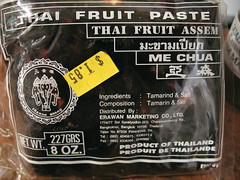
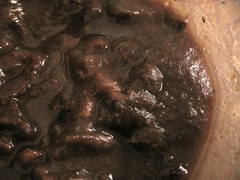
It was worth being brave, though; the chutney is great. The tartness of the tamarind is balanced with banana, golden raisins (plumped in hot water first), and a bit of sugar; a teaspoon of garam masala gives it complexity. We ate it with not-homemade naan.
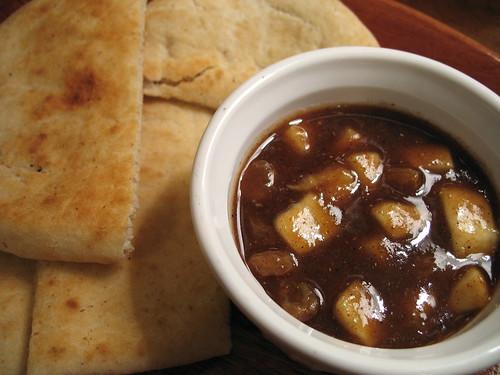
For a main course I wanted to use some of the amchoor I picked up at the Indian grocer — it's a powder made from finely ground unripe mangos, and it's tart in a gentle way, sort of like sumac.

Still in a sort of post-Thanksgiving stupor and unwilling to do anything fussy, I opted to make a very simple amchoor roasted chicken. It was delicious, tart but not at all mouth-puckering. It was very difficult to not eat all of the tasty, tasty, spicy skin before putting the leftovers away.
The only thing I might change about my recipe below is to roast the chicken at a lower temperature. I roasted it at 450 because that's what I'm in the habit of doing, but probably 350 or 375 is better for a bird coated with spices. It tasted fine but the spice mixture got very, very dark.
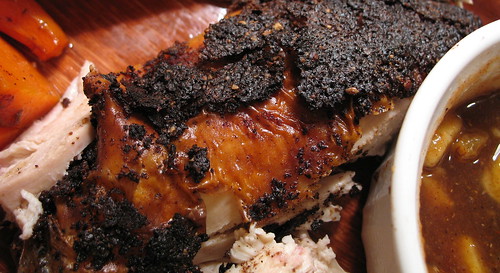
Amchoor roasted chicken
1 3- to 4-lb. chicken, rinsed under cold running water and patted dry
2 tbsp. unsalted butter
2 tsp. amchoor powder
1 tsp. fresh-ground cumin (see note below)
1 tsp. kosher salt
fresh ground pepper, to taste
1 small onion, peeled and cut into four pieces
1 handful cilantro leaves and stems
Preheat the oven to 450 degrees.
Put the butter in a small bowl and set it aside. When it is room-temperature, blend in the amchoor powder, cumin, salt and pepper and mix thoroughly. Use your fingertips or a small silicon spatula to break up any lumps of amchoor powder.
Put the chicken in a small, shallow roasting pan (on top of a rack, or cut-up carrots if you prefer) and tuck the wingtips underneath the bird. Put as many onion pieces in the cavity of the chicken as you can, along with the handful of cilantro. If the legs are sticking out, tie them together with kitchen twine.* Rub the seasoned butter all over the chicken and roast for 60 minutes, or until done.
Note: To make fresh-ground cumin, toast the seeds in a dry frying pan over medium heat until they are fragrant. (This should take just a few seconds; you don't need to brown them). Grind to a fine powder in a spice grinder.
* If you are like me and can never find your twine in the cabinet when you need it, remove the strings from two teabags, tie them together, and use that. The teabags can still be used; you'll just have to fish them out of your cup with a spoon.




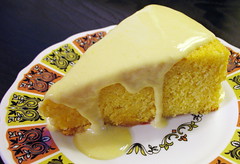
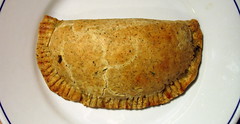


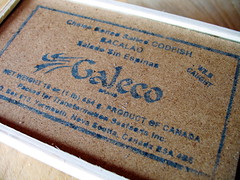

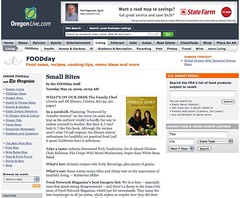





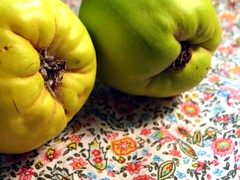
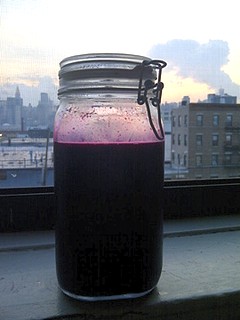
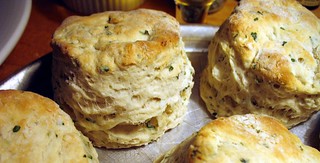

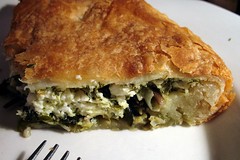


I don't think I'm ever going to look at tamarind the same way again.
ReplyDeleteUh-oh! I should add that it's only really gross for the few seconds that you're squishing your fingers around in the bowl. Also, on a more pleasant note, 1/4 lb. of fruit yields about 1 1/2 cups of extract, enough to use in at least two different recipes.
ReplyDeleteHilarious!!! You inspired me to make a tamarind-free curry tonight... and, courtesy of Madhur, pickled cauliflower from Iran!
ReplyDeleteI cannot wait to taste them, but it'll have to wait 'til tomorrow alas.